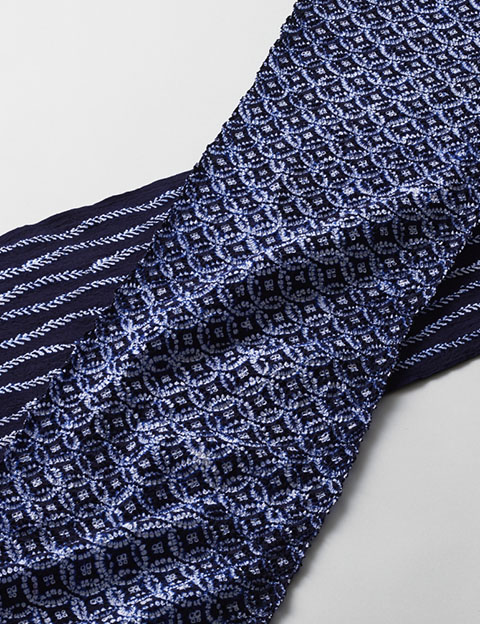ARIMATSU NARUMI Shibori (Tie-dyeing)

Although this sophisticated technique of tie-dyeing (shibori) dates back to the Nara period (710-794), the history of the craft in Arimatsu only goes back around 400 years. The feudal lord from the province of Bungo—now Oita Prefecture—was ordered to assist in the building of Nagoya castle.
Under the protection of the Owari clan, which ruled the area that became Aichi Prefecture, the craft was developed over the years through new techniques producing a distinctive, high quality tie-dyed craft. Because the entire process is performed by hand, finished articles have unique characteristics depending on the way the cloth is tied, even when the design is the same.
Typical of cotton tie-dyeing, there are a vast number of tying techniques (over 100) used in the production of multicolored designs for formal kimonos and unlined yukata. The most representative of these techniques are nui shibori, kumo shibori, miura shibori, kanoko shibori (the well-known "fawn spot" tie-dyeing) and sekka shibori. Unique effects are produced by varying the strength of the dye when indigo is used.
Feature
Arimatsu Narumi Shibori is an exemplary producer of cotton shibori, there are over 100 different shibori techniques used to express a wide variety of designs. Some of the most well-known shibori techniques are nui shibori, kumo shibori, miura shibori, sekka shibori, and more. Shibori dyed with indigo creates a unique contrast of light and dark.
How to make
A patterned paper is cut according to a design before a rough sketch is made on silk, cotton, etc. Then fabric is wrapped with thread before being dyed. The parts tied by the thread remain undyed, and the pattern emerges when the threads are removed. Arimatsu Narumi Shibori work is done through division of labor.

